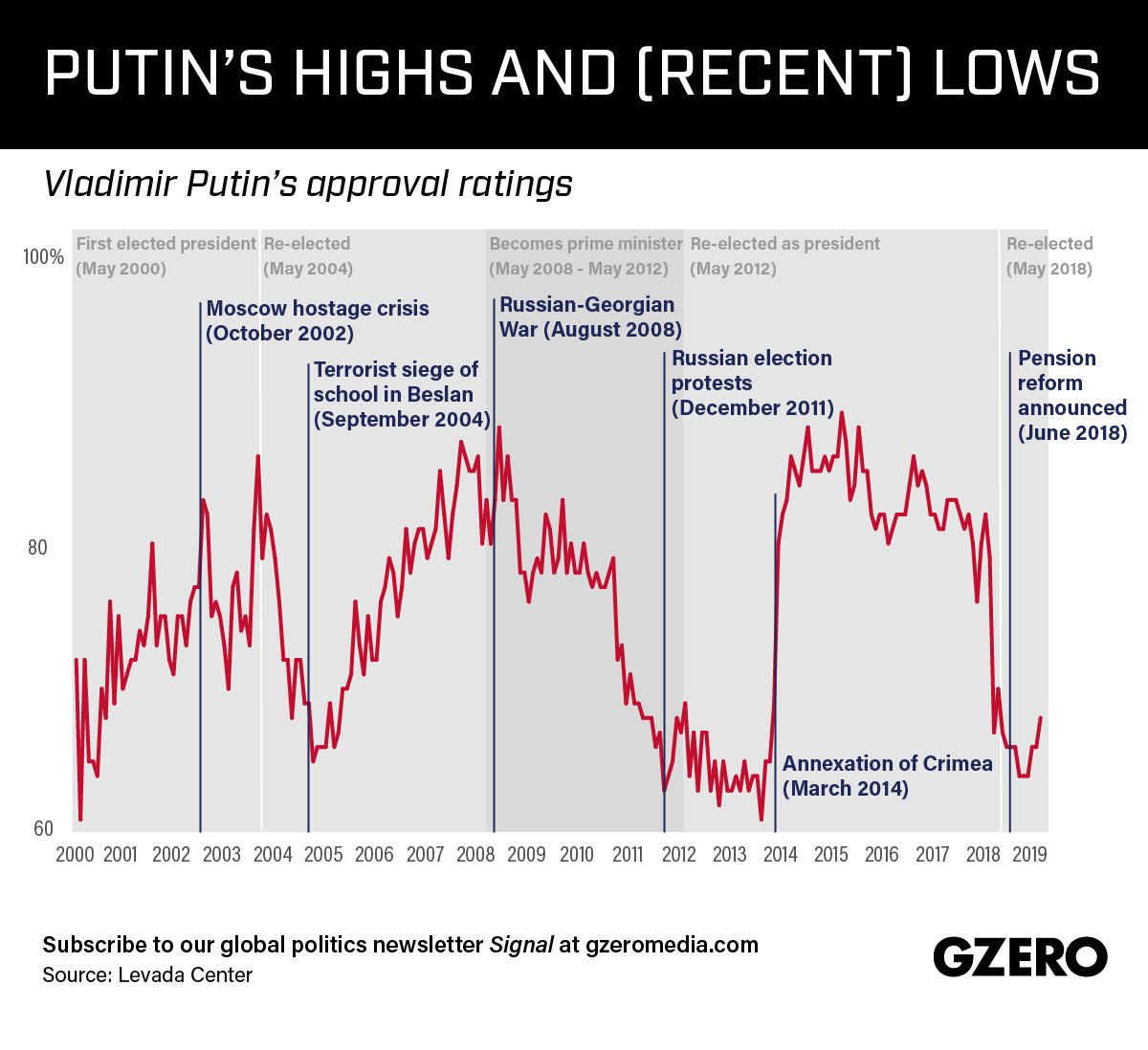July 10, 2019
In nearly twenty years of running Russia, Vladimir Putin has had his highs and his lows. Some of his greatest hits, from a popularity perspective, include his handling of several terrorism crises early in his tenure, his thrashing of Georgia in a brief 2008 war (when he was only pretending not to be the guy in charge of Russia) and, of course, the annexation of Crimea in March 2014, which sent his approval ratings from fresh lows back up to stratospheric highs. But since then, he has come down to earth again — if a mid-60s approval rating can be called "earth" these days. A sluggish economy has played a part, but nothing dented his appeal more than a deeply unpopular pension reform plan unveiled last summer. Here's a look at Putin's ups and downs over the years.
More For You
- YouTube
It's one of the few sources Americans across the political spectrum still rely on.
Most Popular
Think you know what's going on around the world? Here's your chance to prove it.
America’s new National Security Strategy confirms what Europeans have feared for months: Washington now sees a strong, unified European Union as a problem to be solved, not an ally to be supported.
Sports inspire greatness, determination, and resilience — both on and off the field. Bank of America is proud to celebrate the achievements of and uplift communities through the power of sports. Learn more about how Bank of America supports athletes in life and in the game.
© 2025 GZERO Media. All Rights Reserved | A Eurasia Group media company.
